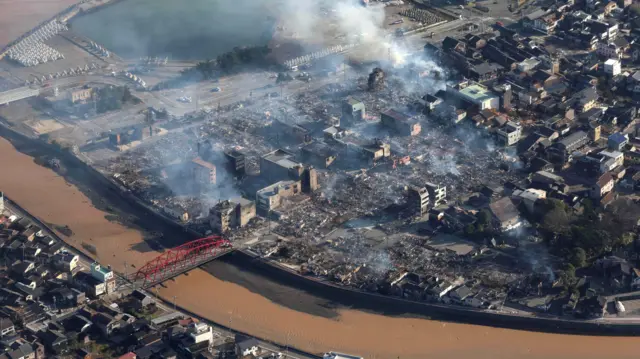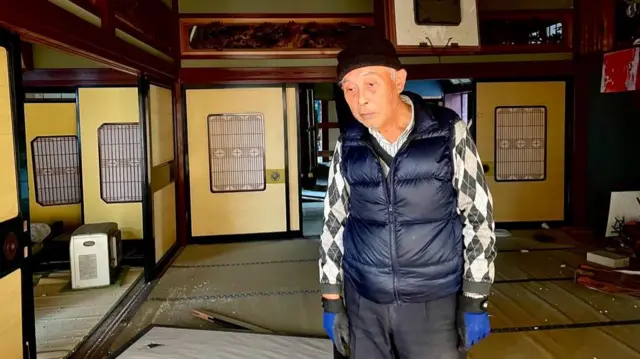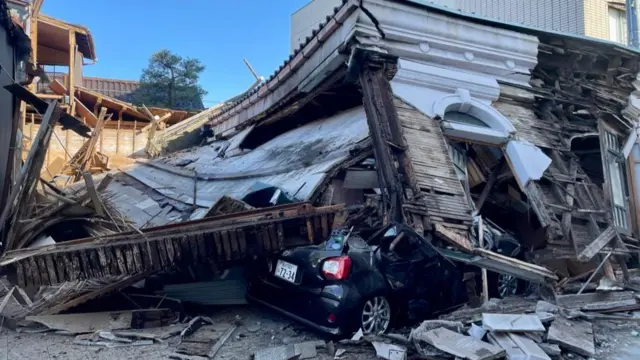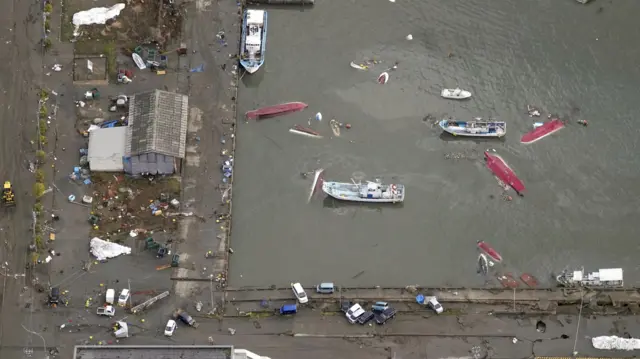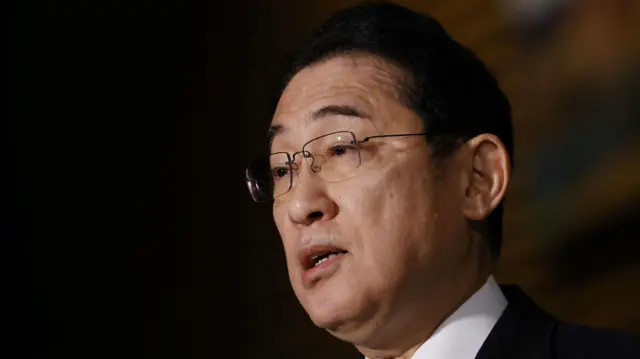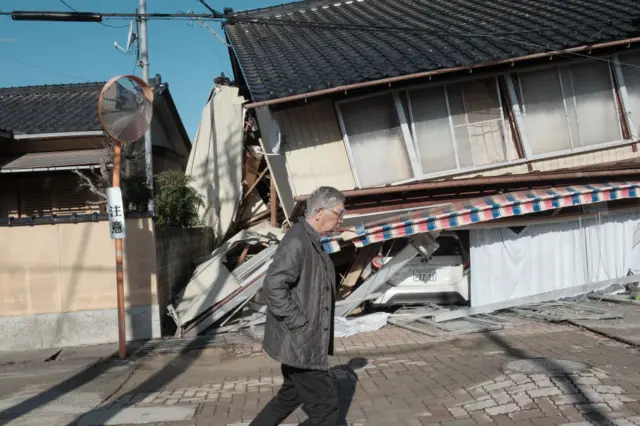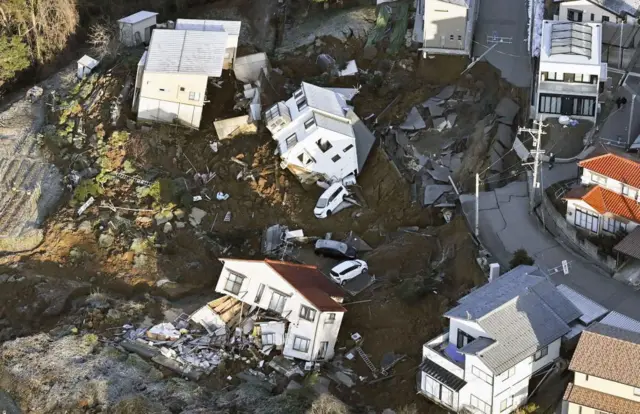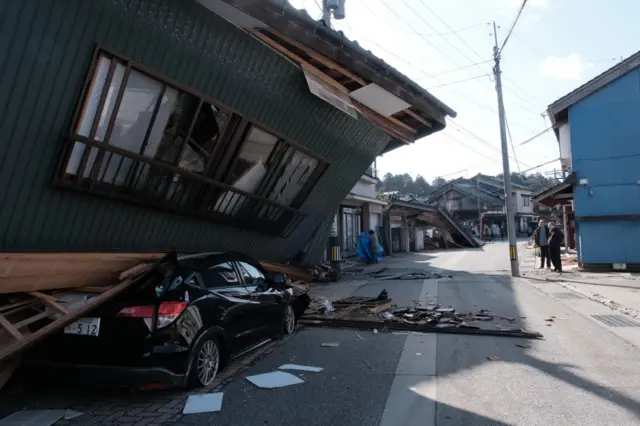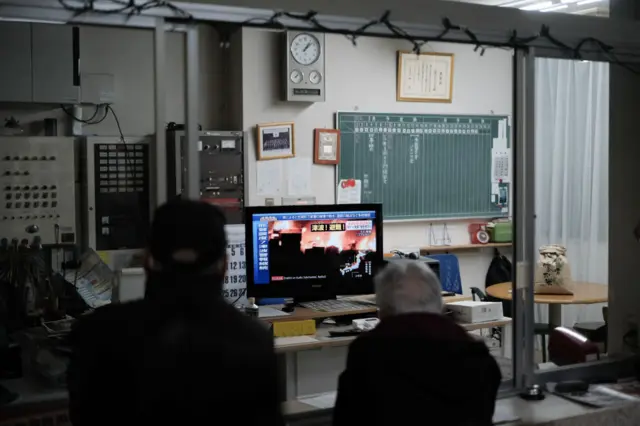Minister warns Japan to 'be alert' for more earthquakespublished at 08:34 GMT 2 January 2024
Let's bring you the latest comments from Japan's chief cabinet secretary who has just held a news conference in Tokyo following an emergency meeting held by the government.
Yoshimasa Hayashi says Prime Minister Fumio Kishida instructed the government to "put lives first" and to "understand the situation" of the devastation caused by the earthquake.
He says: "To the people of Japan, please be on alert that there may be earthquakes for about a week of an intensity scale of up to seven.
"To the people that live in areas where the shake was strong, please look out for evacuation information through local offices, on TV, radio, and internet and take action accordingly."
Hayashi says there are 120 "cases of people" who are waiting to be rescued and then adding "a total of 57,360 people have evacuated".

